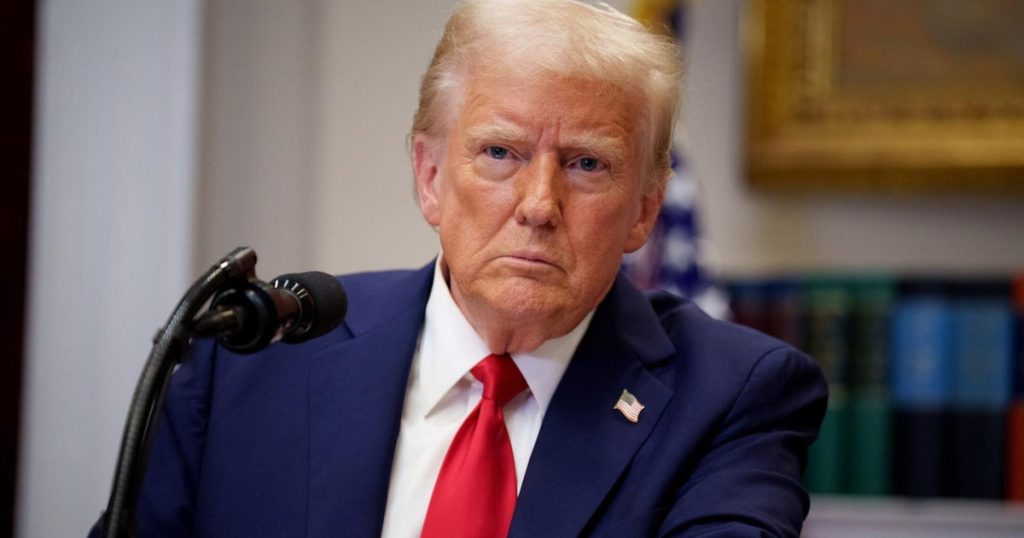This week, the White House is ramping up efforts to secure new tariff agreements with international trading partners, with an impending deadline for negotiations. The Trump administration plans to send out a series of letters to various countries, warning them of potential higher tariffs should they fail to finalize deals by Wednesday. As officials emphasize the urgency of these negotiations, questions arise about which nations will be targeted and the implications of these tariff measures on global trade.
| Article Subheadings |
|---|
| 1) The $1 trillion Tariff Push |
| 2) Details of the Communication Strategy |
| 3) Anticipated Impact on Global Trade |
| 4) Focus on Key Trading Relationships |
| 5) Future Developments and Consequences |
The $1 trillion Tariff Push
The Trump administration is poised to exert significant pressure on the U.S.’s trading partners in a bid to finalize tariff agreements worth around $1 trillion. This ambitious push is particularly focused on small to medium-sized nations, with an emphasis on those where the U.S. has high trade deficits. Kevin Hassett, the director of the National Economic Council, indicated that these countries may enhance their trade relationships significantly by aligning with U.S. policies. The deadline for these negotiations has been set for Wednesday, with the president confirming that letters detailing the new tariffs will begin dispatched as early as Monday.
Details of the Communication Strategy
The communication strategy for this tariff initiative involves sending out approximately 100 letters to both small countries and those with which the U.S. has minimal trade. These letters will serve as formal notifications of potential additional tariffs if trade deals aren’t reached. Scott Bessent, the Treasury Secretary, elaborated that these letters will outline the conditions under which tariffs may increase, particularly for nations that fail to cooperate. Furthermore, countries aligning with BRICS—an alliance consisting of emerging economies—could face an additional 10% tariff, highlighting the administration’s aggressive stance.
Anticipated Impact on Global Trade
The implications of these potential tariff adjustments could be far-reaching. Analysts warn that the measures could threaten to overhaul the global economy and spark broader trade wars. The administration has maintained that these tariffs are essential for rebalancing trade deficits. However, experts caution that such tariffs may also result in retaliatory actions from affected nations, complicating already tense international relations. In this context, it remains uncertain how these proposed tariffs will truly reshape the trading landscape, but signs of tension are evident as nations scramble to avert financial penalties.
Focus on Key Trading Relationships
The U.S. government is primarily concentrating on nations that represent the most significant trade deficits. Reports indicate that 18 major trading relationships account for approximately 95% of the existing trade imbalance. Consequently, countries like Vietnam and India are in the spotlight. Importantly, Canada has been explicitly excluded from this letter strategy, suggesting that ongoing trade talks may result in more favorable conditions without the threat of additional tariffs. Pete Hoekstra, the U.S. Ambassador to Canada, made it clear that the relationship with Canada remains strong, which may afford them different treatment compared to smaller nations.
Future Developments and Consequences
As the deadline for negotiations approaches, many are left pondering the future of U.S. trade policies under the current administration. While some officials suggest that deadlines and tariffs might be extended for countries demonstrating good-faith negotiations, uncertainty remains a prevalent theme. The administration’s recent announcements regarding potential deals with countries like Vietnam indicate a rapidly evolving dynamic, but the ultimate ramifications—both domestically and globally—are still unclear. Observers note that while immediate results may not be definitive, the long-term impact of this tariff strategy could be significant, altering the face of international trade.
| No. | Key Points |
|---|---|
| 1 | The Trump administration is pushing for new tariff deals with trading partners. |
| 2 | Approximately 100 letters will be sent to countries lacking trade deals. |
| 3 | Countries aligning with BRICS face additional tariffs. |
| 4 | The focus is on key trading relationships accounting for significant trade deficits. |
| 5 | Uncertainty surrounds potential changes in tariff deadlines. |
Summary
In light of the increasing urgency surrounding U.S. tariff agreements, the administration is actively pursuing negotiations with trading partners ahead of looming deadlines. As discussions continue, the potential for higher tariffs looms large, prompting both uncertainty and hope among those involved. The ramifications of these developments will likely extend far beyond simple financial implications, shaping the very framework of international trade relations.
Frequently Asked Questions
Question: What are the potential consequences of the new tariffs?
The new tariffs could significantly alter global trade dynamics, potentially leading to retaliatory actions from affected countries and complicating existing trade relationships.
Question: Which countries are primarily targeted by the U.S. tariff push?
The U.S. is focusing on small to medium-sized nations, particularly those with which it has significant trade deficits, including countries like Vietnam and India.
Question: How will these tariff measures affect the U.S. economy?
The tariff measures could lead to price increases on imported goods, affecting consumers and businesses, while also possibly resulting in job losses in sectors reliant on international trade.


